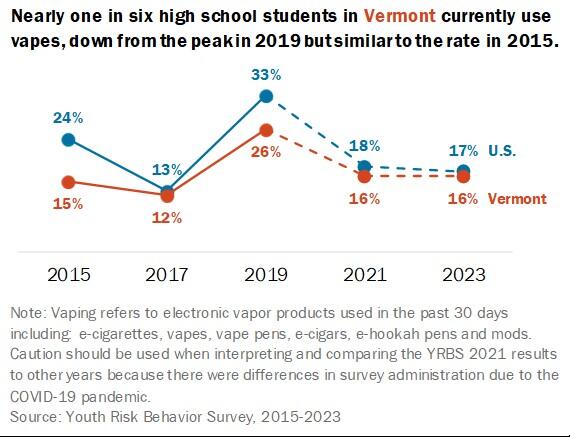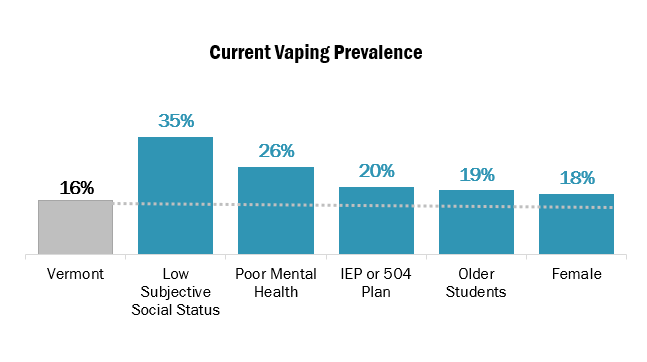
Vapes contain harmful metals, such as arsenic and lead. As e-cigarettes deliver flavorings, additives, and, typically, high levels of nicotine through an inhaled aerosol, they are harmful to both the user and those who are exposed secondhand.
Disposable devices are the most popular type of electronic cigarettes among high school students who currently use. With the high prevalence of electronic cigarettes (e-cigarette, e-cigs or vapes) and increasing popularity of oral nicotine pouches among youth, teens and young adults, the Health Department Tobacco Control Program is educating on harms to consumers to prevent product initiation and reduce nicotine use.
Flavored Tobacco is Dangerous
Young people are more likely than adults to use flavors. The tobacco and vape industry markets flavored products to get youth to start using and keep them hooked. Flavors are toxic chemicals that when inhaled, can cause cancer and lung disease. Flavors, including mint, mask the harsh taste of tobacco, making it easier to use but harder to quit.
Emerging Nicotine Products
Oral nicotine pouches, which contain nicotine, flavorings and other ingredients, are placed between the lip and gum where nicotine is absorbed. Whether made from tobacco plants or made in a lab, nicotine pouches are not a safe alternative to smoking or vaping and not FDA approved for quitting any other form of tobacco use.
Oral nicotine pouches are never safe for youth, young adults and pregnant women.
Data on Youth Vaping and Smoking
As of 2023, 16% of Vermont high school students said they used e-cigarettes at least once in the past 30 days. Of those students, 37% did so daily, raising concern for addiction, increased likelihood of future cigarette use and lifelong nicotine dependence.
Vaping Rates Over Time

Current Vaping Rates (%)

Among high school students who currently use any tobacco, 40% are using two or more tobacco products. One in 17 high school youth currently smoke cigarettes (6%). Smoking rates are highest among high school youth with an IEP, LGBTQ+, Black, Indigenous, people of color, older youth and male youth.
The Health Department follows the U.S. Surgeon General’s recommendation urging those who influence youth, young adults and people who are pregnant to discourage nicotine use in any form, including e-cigarettes.



